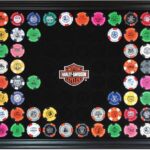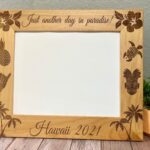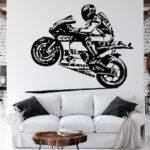I. The Benefits of Upcycling for Your Home Studio
II. Essential Repurposed Materials for Acoustic Treatment
III. DIY Projects to Enhance Your Creative Space
The Benefits of Upcycling for Your Home Studio
Hey there, fellow creators! If you’re anything like me, you probably spend a lot of time in your home studio, surrounded by your gear and inspiration. But have you ever thought about how the way you set up your space can impact your creativity? One fantastic way to enhance your studio environment is through upcycling. Not only is it eco-friendly, but it also gives your space a unique flair. Let’s dive into the benefits of upcycling for your home studio!
1. Eco-Friendly Vibes
In today’s world, being environmentally conscious is more important than ever. Upcycling means taking materials that might otherwise end up in a landfill and transforming them into something new and functional. By choosing to upcycle, you’re reducing waste and giving materials a second chance at life. Plus, it feels good to know that your studio is a little greener!
2. Unique Aesthetic
Let’s face it: we all want our creative spaces to reflect who we are. Upcycling allows you to create a studio that’s truly one-of-a-kind. Imagine using an old wooden pallet as a shelving unit or turning vintage suitcases into a stylish storage solution. These unique pieces not only serve a purpose but also become great conversation starters. Your studio will be filled with character and charm, making it an inspiring place to work.
3. Budget-Friendly Options
Setting up a home studio can get pricey, especially when you’re trying to buy the latest gear or trendy furniture. Upcycling offers a budget-friendly alternative. Many items that you can upcycle are often available for free or at a low cost, whether from thrift stores, garage sales, or even your own home. Why spend a fortune on new items when you can create something amazing without breaking the bank?
4. Boosts Creativity
Engaging in upcycling projects can be a fantastic way to flex your creative muscles. When you take an ordinary item and reimagine its purpose, you’re tapping into your imagination in a whole new way. This process can spark new ideas and solutions in your work, helping you think outside the box. Plus, the sense of accomplishment you feel after completing a DIY project can be a huge boost to your creative confidence!
5. Customizable Spaces
One of the best things about upcycling is that you can customize your studio according to your personal taste and needs. Want a workstation that fits perfectly in that nook? Upcycle an old desk or table to make it work for you. Need some soundproofing? Old blankets can be stylishly hung up as acoustic treatment. The possibilities are endless, and you can create a space that truly suits your workflow.
In conclusion, upcycling is not just a trend; it’s a way to enhance your home studio while being eco-conscious, budget-friendly, and creative. So why not take a look around your space and see what you can transform? Happy upcycling, and may your studio be a hub of inspiration!
Essential Repurposed Materials for Acoustic Treatment
When it comes to creating a home studio, one of the most important aspects to consider is sound quality. You want your recordings to shine, and that often means controlling the acoustics of your space. The good news? You can achieve fantastic acoustic treatment using repurposed materials that not only save you money but also add a unique touch to your studio. Let’s dive into some essential items you might have lying around that can help enhance your sound quality!
1. Old Blankets and Towels
Believe it or not, those old blankets and towels can be your best friends when it comes to absorbing sound. Thick, heavy fabrics are excellent at reducing noise reflections. Here are a few ways to use them:
- Wall Hangings: Hang them on walls where sound tends to bounce. This can be especially useful in corners or behind your recording setup.
- Soundproofing Windows: If your studio has windows, drape a heavy blanket over them when recording to minimize outside noise.
2. Cardboard Boxes
Cardboard is often overlooked, but it can be a surprisingly effective acoustic treatment material. Use it in the following ways:
- DIY Bass Traps: Stack and fill cardboard boxes with soft materials (like clothes or fabric scraps) to create bass traps that help control low-frequency sounds.
- Reflection Panels: Cut cardboard into panels and cover them with fabric to create lightweight reflection panels that can be strategically placed in your studio.
3. Old Furniture
Your old furniture might be more than just a place to sit. Here’s how to utilize it:
- Couches and Armchairs: These items can absorb sound and reduce echo. Position them in your studio to create a cozy and acoustically-friendly environment.
- Bookshelves: Filled with books, they can act as excellent sound diffusers. Place them against walls to help scatter sound waves rather than have them bounce back directly.
4. Carpet Scraps
If you have any leftover carpet or rug pieces, they can be used to improve your studio’s acoustics:
- Floor Treatment: Lay them down in your recording area to help absorb sound and reduce floor noise, especially in rooms with hard surfaces.
- Wall Panels: You can also mount carpet scraps vertically on your walls for additional sound absorption.
5. Egg Cartons
While they might seem unconventional, egg cartons can be a quick fix for sound diffusion:
- DIY Wall Panels: Attach them to walls to help break up sound waves. They won’t be the most effective solution, but they can help reduce some echo in a pinch.
- Creative DIY Projects: Consider painting or decorating them for a unique aesthetic while providing functional acoustic treatment.
Incorporating these repurposed materials into your home studio not only helps with sound quality but also allows you to express creativity and sustainability. So, take a look around your space—what can you upcycle today to enhance your acoustic treatment?
III. DIY Projects to Enhance Your Creative Space
Sprucing up your home studio doesn’t have to mean a hefty budget or a trip to the nearest furniture store. In fact, some of the most rewarding enhancements come from DIY projects that allow you to express your creativity while making your space more functional. Let’s dive into some fun and practical DIY ideas that will breathe new life into your creative haven!
1. Repurposed Bookshelf
Do you have old wooden crates or unused shelves lying around? Why not turn them into a stylish bookshelf? Here’s how:
- Gather materials: Crates, wood glue, screws, and paint.
- Construct: Stack the crates in a way that suits your needs—vertically for a tall bookshelf or horizontally for a more casual look.
- Finishing touches: Paint or stain the wood to match your studio’s vibe. You can even add wheels for mobility!
2. Sound-Absorbing Wall Art
Who says acoustic treatment can’t be beautiful? Create your own sound-absorbing wall art using fabric-covered panels:
- Materials: Wooden frames, acoustic foam, and fabric.
- Assemble: Cut the foam to fit inside the frames, then wrap the foam with your chosen fabric.
- Hang: Position the panels around your studio for a double dose of creativity and soundproofing!
3. Upcycled Pallet Furniture
Pallets are all the rage in DIY furniture design, and they can be a fantastic way to add rustic charm to your studio. Here’s a simple project:
- Pallet Coffee Table: Stack and secure a couple of pallets together, add wheels, and finish with a coat of paint or varnish.
- Pallet Acoustic Panels: Attach some acoustic panels to the surface of the pallet for a unique look that serves a dual purpose.
4. Creative Lighting Solutions
Don’t underestimate the power of lighting! You can easily make a statement piece with some simple materials:
- Materials: Old jars, string lights, and decorative elements (like pebbles or sand).
- Assemble: Fill the jars with your decorative elements, then insert the string lights. This creates a warm, inviting glow that enhances your workspace.
- Placement: Scatter these lights around your studio for a cozy atmosphere.
5. Personalized Corkboard
Stay organized and inspired with your own DIY corkboard:
- Gather materials: A piece of plywood, cork tiles, fabric, and a staple gun or glue.
- Assemble: Adhere the cork tiles to the plywood, then cover with fabric for a stylish finish.
- Customize: Use push pins to display notes, photos, or inspiration!
These DIY projects not only enhance the functionality of your home studio but also allow you to showcase your personality and creativity. Plus, you’ll get the satisfaction of knowing you made them yourself! So roll up your sleeves, gather your materials, and let your creativity flow!










Comments